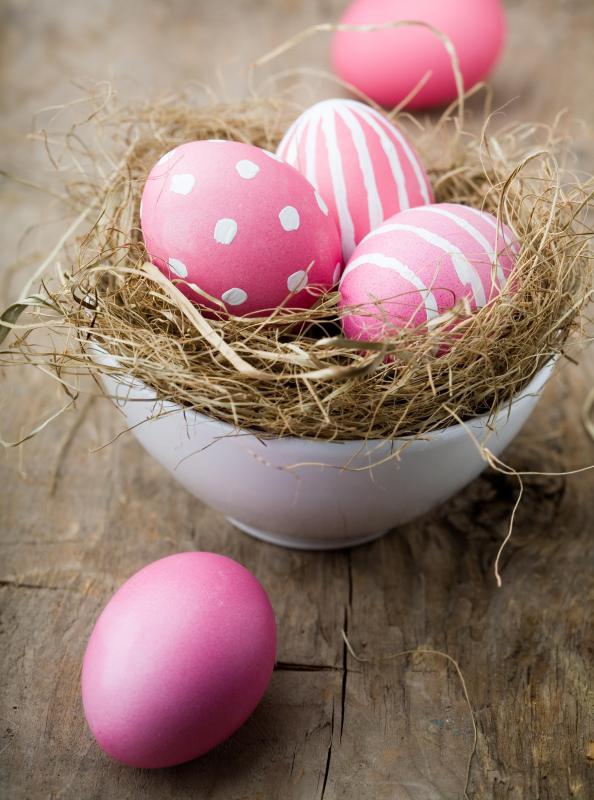At WiseGEEK, we're committed to delivering accurate, trustworthy information. Our expert-authored content is rigorously fact-checked and sourced from credible authorities. Discover how we uphold the highest standards in providing you with reliable knowledge.
What is the Historical Significance of the Easter Egg?
Prehistoric graves have yielded clay eggs, entombed with their inhabitants as tokens of immortality. Ancient Romans decorated eggs and gave them as gifts to celebrate the vernal equinox. As these examples demonstrate, eggs have long been symbols of immortality, rebirth, and new life. Dyeing eggs in bright hues and decorating them is a tribute to the vitality and fertility evident everywhere in spring; new life emerging after the cold, dark dormancy of winter. With the advent of Christianity, the symbolism of the egg was adapted to signify Christian principles of renewal, specifically Christ’s Resurrection on Easter morning.
Symbolism notwithstanding, Easter eggs historically also held a particular appeal to Christians who observed Lent. For many years, eggs were prohibited by the Catholic Church, along with meat, during the period of the Lenten fast. Consequently, the eggs were an eagerly anticipated part of breakfast on Resurrection Sunday, or Easter morning. It is customary in some Slavic countries to bring brightly dyed eggs to church on Holy Saturday to be blessed before consumption at breakfast the next day.

Through the ages, Easter eggs have been dyed with natural dyes made from plant materials and other foodstuffs. Today, while some people still prefer the subtle tones produced by natural dyes, commercial dyes are available in tablet, powder, and liquid form. Different cultures have different customs attached to how they make the decorated eggs a part of their Easter celebration. Hunting for hidden eggs and egg-rolling contests remain popular.

Almost every culture that includes the tradition of Easter eggs colors or embellishes the eggs in some way. The Ukrainian pysanky are eggs that are elaborately decorated with a wax-resist technique that produces incredibly lovely, intricate designs. In Mexico and the American Southwest, cascarones are vibrantly colored eggshells that have been blown out and filled with confetti. The cascarones are broken over the heads of unsuspecting friends and family members, showering them with confetti and, hopefully, good fortune.
Greek tsoureki is a traditional Easter bread that contains eggs dyed red to symbolize the blood of Christ. The Italian version of this bread, pani di Pasqua all’ uovo, is a braided loaf studded with colorful eggs. Brightly dyed hard-boiled Easter eggs are pushed into the dough of several versions of Eastern European babkas prior to baking.
Chocolate Easter eggs and jelly beans are later incarnations of the Easter “egg,” appearing in Easter baskets sometime during the early 1800s and 1930s, respectively. Jelly beans were around earlier, they just did not have an association with the Easter bunny until around this time.
AS FEATURED ON:
AS FEATURED ON:












Discussion Comments
@Penzance356 - Those crepes sound like a delicious way to use up eggs. Traditions are also part of my family, though ours involve Easter egg coloring. This year everyone is drawing a likeness of a family member on their egg, then we'll have a neighbor judge them to see who wins!
I saw a TV show once about how British people make pancakes (crepes) just before Lent, to use up the eggs and other rich foods in their pantry. They are served with lemon juice or syrup.
I don't know if this means that eggs are not eaten again until Easter, but it sounds like a cool tradition either way.
I babysit for several local families and the kids are always asking me questions I can't answer. A quick search on Google for 'Easter egg' brought me here, to a clear and easy to understand explanation.
We're going to be doing some Easter egg crafts together, and I'll be ready for whatever they ask. I may even work some of this information in regardless.
Post your comments